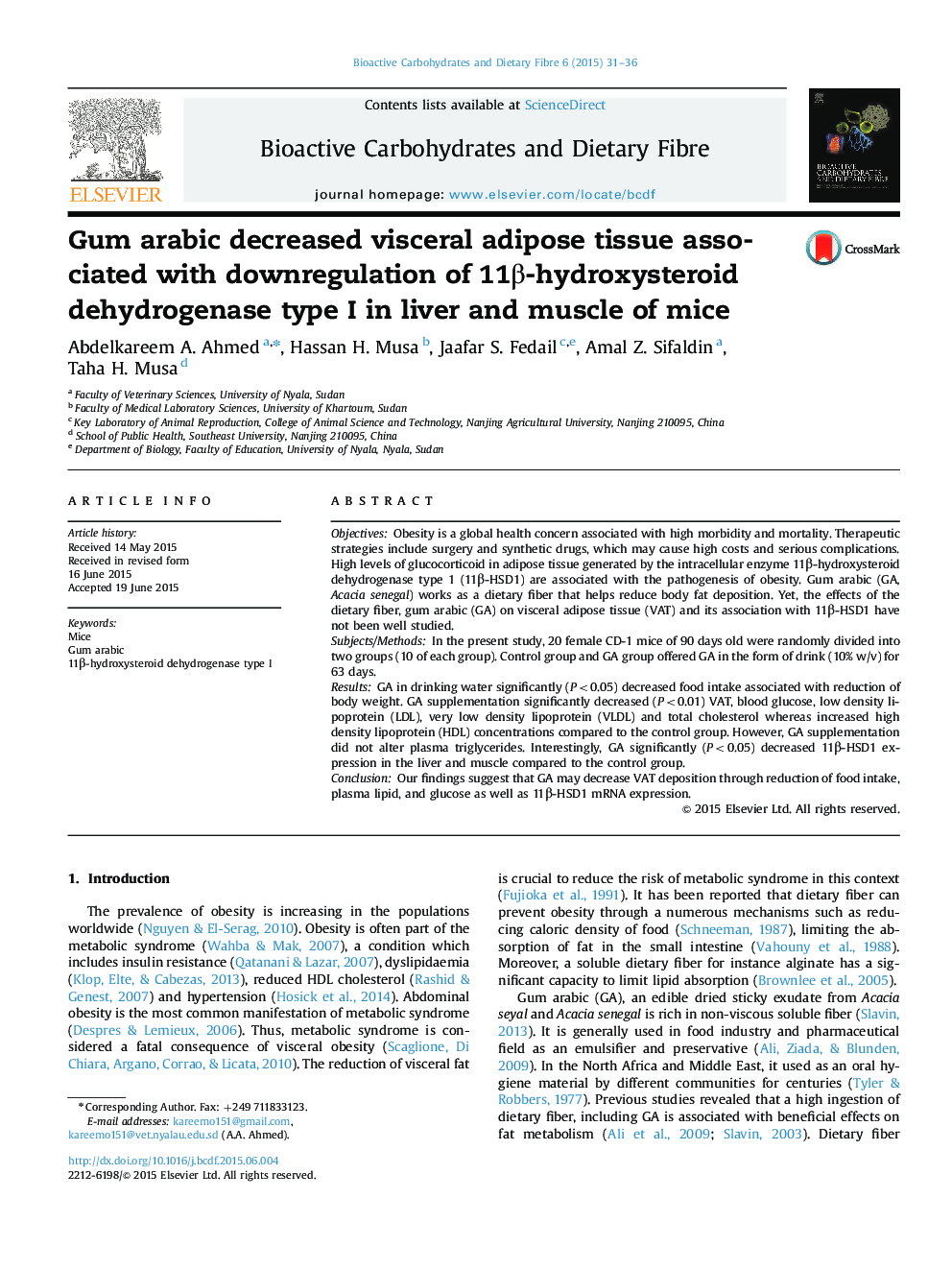| Article ID | Journal | Published Year | Pages | File Type |
|---|---|---|---|---|
| 1413013 | Bioactive Carbohydrates and Dietary Fibre | 2015 | 6 Pages |
ObjectivesObesity is a global health concern associated with high morbidity and mortality. Therapeutic strategies include surgery and synthetic drugs, which may cause high costs and serious complications. High levels of glucocorticoid in adipose tissue generated by the intracellular enzyme 11β-hydroxysteroid dehydrogenase type 1 (11β-HSD1) are associated with the pathogenesis of obesity. Gum arabic (GA, Acacia senegal) works as a dietary fiber that helps reduce body fat deposition. Yet, the effects of the dietary fiber, gum arabic (GA) on visceral adipose tissue (VAT) and its association with 11β-HSD1 have not been well studied.Subjects/MethodsIn the present study, 20 female CD-1 mice of 90 days old were randomly divided into two groups (10 of each group). Control group and GA group offered GA in the form of drink (10% w/v) for 63 days.ResultsGA in drinking water significantly (P<0.05) decreased food intake associated with reduction of body weight. GA supplementation significantly decreased (P<0.01) VAT, blood glucose, low density lipoprotein (LDL), very low density lipoprotein (VLDL) and total cholesterol whereas increased high density lipoprotein (HDL) concentrations compared to the control group. However, GA supplementation did not alter plasma triglycerides. Interestingly, GA significantly (P<0.05) decreased 11β-HSD1 expression in the liver and muscle compared to the control group.ConclusionOur findings suggest that GA may decrease VAT deposition through reduction of food intake, plasma lipid, and glucose as well as 11β-HSD1 mRNA expression.
Graphical abstractFigure optionsDownload full-size imageDownload as PowerPoint slide
